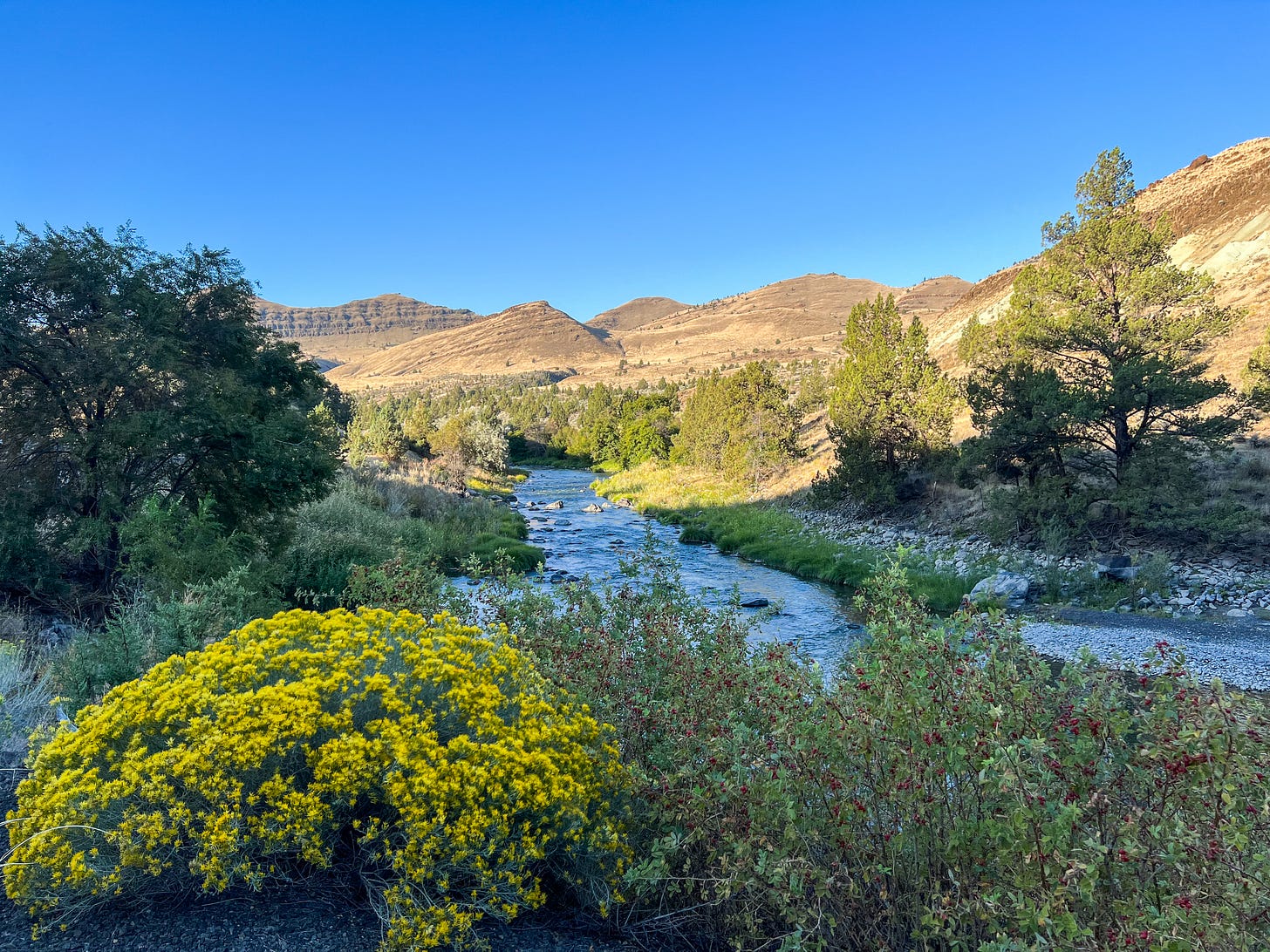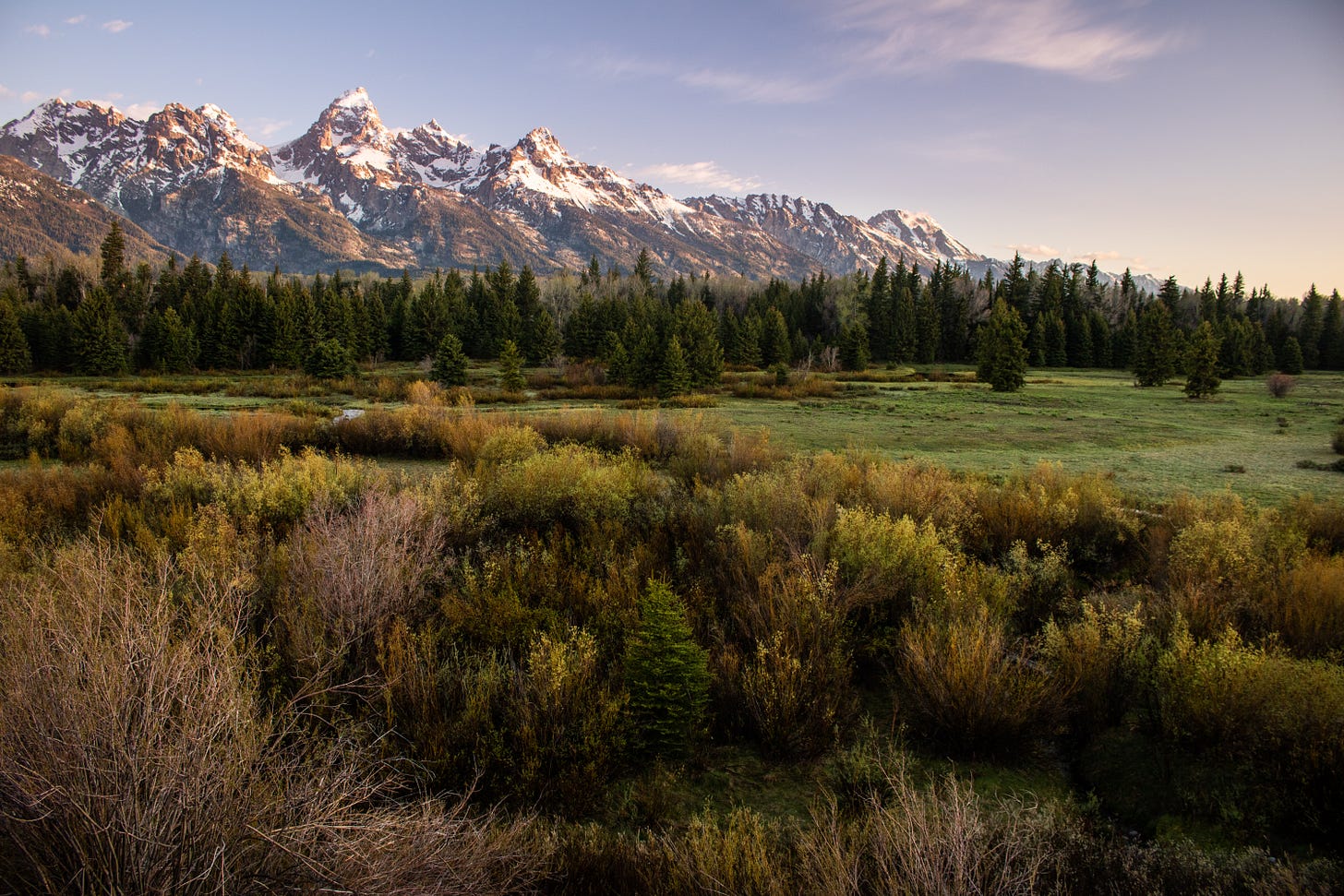We Already Have a Public Land Sales Law—And It Actually Boosts Conservation
FLTFA protects public lands, while Mike Lee’s bill gives them to developers
Imagine two visions of America’s public lands.
In one, a small, isolated patch of public land—surrounded by development, ecologically degraded, and expensive to manage—is sold to a willing buyer. The proceeds don’t vanish into bureaucracy.
Instead, they’re actively reinvested in new public land acquisition, in pristine habitat for sage grouse, salmon, or grizzlies, in securing trailheads for hikers, or in preserving sacred Native American cultural sites.
That’s the promise of the Federal Land Transaction Facilitation Act, or FLTFA, which has existed since 2000 and has been wildly successful over the years.
In the other vision, the same land is sold. But the money? It disappears into the U.S. Treasury—never seen again by the conservation agencies that know how to protect land, water, and wildlife. No restored ecosystems. No new trail access. No preservation of irreplaceable sites.
That’s the reality of Senator Mike Lee’s public land sales bill.
Included in the so-called “One Big Beautiful Bill”—his updated section starts on page 202—it’s a dangerous attempt to gut a proven conservation tool and turn land disposal into a one-way street of loss.
As the Senate is scheduled to vote on the GOP’s 940-page mega-bill this weekend, let’s compare the public land sales law that exists right now (FLTFA) with what Mike Lee proposes to do.
FLTFA: A Quiet Champion of Conservation
The Federal Land Transaction Facilitation Act was first passed in 2000 with a simple, brilliant premise: if the federal government sells land it doesn’t need, it should use the money to buy land it does.
FLTFA allows the Bureau of Land Management (BLM) to sell low-value, hard-to-manage parcels—often isolated by development or checkerboarded with private land—and then use that revenue to acquire lands of high ecological, recreational, cultural, or scenic value.
It’s the definition of a win-win for all. Literally every party involved gets a deal they benefit from.
Every sale must be backed by environmental review and tied to land-use plans.
From 2000 to 2011, FLTFA generated over $113 million in strategic land conservation, which was invested in no fewer than 39 different land conservation projects.
It protected riparian corridors, wildlife migration routes, Indigenous cultural sites, and public access points. It expanded national monuments, wildlife refuges, and recreation areas—without costing taxpayers a single dime.
Then, in July 2011, FLTFA expired due to congressional inaction. For years, vital land protection efforts languished while Congress dragged its feet. Finally, in 2018, FLTFA was permanently reauthorized, thanks to broad bipartisan support.
It’s not controversial. It’s not ideological. It’s conservation with common sense.
Mike Lee’s Plan: Sell Land, Pocket the Cash
Now contrast that with Senator Mike Lee’s proposal: sell off 1,250,000 acres of BLM lands to the highest bidder—but instead of reinvesting in conservation, send 85% of the revenue directly to the U.S. Treasury’s general fund.
It’s a one-directional stream of funds away from conservation.
A meager 10% of proceeds would be allocated to “hunting, fishing, and recreational amenities”—whatever that means—and to “address the deferred maintenance backlog.”
Compare this to FLTFA’s 96% (!) of proceeds that go to actual new public land acquisition by agencies like the BLM, U.S. Forest Service, National Park Service, and U.S. Fish and Wildlife Service.
Mike Lee’s bill doesn’t mention anything about habitat protection. No cultural preservation. No added access for sportsmen or hikers. No land exchanges. Just a revenue grab dressed up in the language of fiscal discipline.
I’d also like to point out that—while FLTFA is 100% self-funding—Mike Lee’s bill would give 15,000,000 dollars to Interior Secretary Burgum to help him sell off public lands this year alone.
Mike Lee wants to sell public lands to appease his donors so badly he’s literally allocating millions of dollars to get it done.
Let’s be clear: Senator Lee has long made it known that he doesn’t believe in the very idea of federal public lands. He’s introduced bills to transfer federal lands to the states. He’s mocked national monuments. He’s pushed to limit the Antiquities Act.
His latest scheme is no different—it’s not about efficiency, it’s about erosion. Erosion of public stewardship, public access, and the public good.
While FLTFA carefully balances disposal with conservation, Lee’s plan is disposal without conscience.
And here’s the kicker: sending the proceeds to the Treasury doesn’t reduce the deficit in any meaningful way. It’s symbolic.
But the damage to public lands? That’s very real and irreversible.
Why It Matters
Some might argue: what’s the big deal? It’s just money, right?
But this is about vision. What kind of country do we want?
Do we want a nation where surplus land sales are recycled into public benefit—into clean water, preserved habitat, historic landscapes, and outdoor access for all?
Or do we want a country where our public land is simply sold off to the highest bidder—which, by the way, can be a foreign entity, hedge fund, or billionaire—privatized, and the money vanishes into the same black hole that swallows every other one-time revenue source?
FLTFA is a mechanism of stewardship. Lee’s bill is one of liquidation.
In a time when public lands are under pressure from climate change, development, and fragmentation, we need tools that work smarter—not bills that sell out our future for budget theater.
Conservation Wins That Never Make Headlines
Under FLTFA, land management agencies have done remarkable work that most Americans never hear about—all funded by the sale of select, small parcels of public land.
In Nevada, it funded land acquisitions that helped protect Red Rock Canyon National Conservation Area from encroaching development.
In Idaho, it protected crucial bird habitat and recreational opportunities along the Snake River.
In Colorado it helped preserve historic sites in Canyons of the Ancients National Monument.
In Oregon, it secured lands along the John Day River, a haven for both fish and fly-fishers.
In Wyoming, it helped protect scenery and wildlife habitat in Grand Teton National Park that were threatened by development.
These are just a few examples of the kinds of targeted, smart conservation moves that deliver real results—cleaner water, healthier wildlife populations, better outdoor experiences—all while building goodwill with local communities and landowners.
And they’re only possible because of the revenue reinvestment principle FLTFA enshrines.
The Real Fiscal Story
Supporters of Senator Lee’s bill claim it would bring in money for the government. But let’s do the math: FLTFA already brings in money—from land sales—and spends it strategically to reduce management costs, consolidate holdings, and enhance land value. It’s not wasteful. It’s efficient.
Lee’s bill, on the other hand, would use that same revenue to do nothing but pad the general fund—where it gets lost amid trillion-dollar expenditures.
So we’re not talking about choosing between conservation and fiscal responsibility. We’re choosing between conservation and performative austerity.
It’s the difference between investing and dismantling.
A Call to Action
If you care about public lands—whether you’re a hunter in Wyoming, a hiker in Utah, a birder in California, an angler in Oregon, or just someone who believes America’s wild places are worth protecting—then you should be deeply alarmed by where this is going.
We can’t allow the political sabotage of tools like FLTFA. We should be expanding them, not gutting them. We should be proud that our country figured out how to turn land sales into land protection. That’s innovation. That’s legacy. That’s leadership.
Senator Lee’s plan would turn that legacy to ash.
So let’s say it plainly: if the government is going to sell public land—and in some cases, it should—it must reinvest those proceeds into making public lands stronger, more connected, more accessible, and more resilient.
That’s not a partisan position. It’s a patriotic one.
Senator Lee’s bill would do the opposite: treat land as a disposable commodity, selling it off, and sending almost all the money to the U.S. Treasury—not to the states, not to local governments, and definitely not to conservation agencies.
And remember: public land can be sold only once. Once it’s in private hands, that’s where it will stay.
Easy Ways to Help Protect Our Public Lands
There are a number of easy and convenient ways to voice your opposition to the selling of public lands:
Email Senate Majority Leader John Thune (R-SD) and tell him to strip Mike Lee’s public land sales from the “One Big Beautiful Bill.”
Call your own Congresspeople (both senators and representatives) at 202-224-3121.
Fill out the “Stop the Senate’s Plan to Sell Off Public Lands” form provided by Outdoor Alliance.






